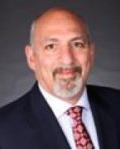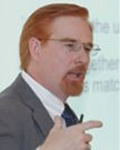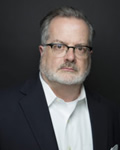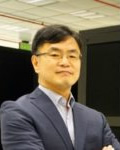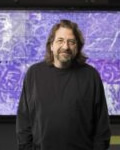Marc Hamilton
VP Solutions Architecture and Engineering
Nvidia

Marc Hamilton leads the worldwide Solutions Architecture and Engineering team, responsible for working with Nvidia’s customers and partners to deliver the world’s best end to end solutions for artificial intelligence and deep learning, professional visualization, and high performance computing.
Prior to Nvidia, Hamilton worked at HP in the Hyperscale Business Unit and at Sun Microsystems in the HPC and data center groups.
Hamilton also worked at TRW developing HPC applications for the US aerospace and defense industry. He has published a number of technical articles and is the author of the book, “Software Development, Building Reliable Systems”. Hamilton holds a BS degree in Math and Computer Science from UCLA, an MS degree in Electrical Engineering from USC, and is a graduate of the UCLA Executive Management program.
HPCwire: Nvidia has had prominent early successes with Volta in the traditional HPC and hyperscale space, how will Nvidia continue the momentum and fend off competition?
Marc Hamilton: Nvidia has become one of the leading AI computing companies by focusing on a single accelerated computing architecture applied in three markets, PC gaming, data center (including HPC, AI, and professional visualization), and automotive. No other company has technology and products that cover the entire stack from architecture to processors to software including CUDA, libraries (cuDNN, etc.) frameworks (TensorRT), and cloud (Nvidia GPU Cloud, or NGC). All three markets are increasingly using AI and our revenues in all three markets applied to a single accelerated computing architecture help drive the scale of R&D required to continue our leadership and momentum.
HPCwire: How will new AI-relevant workloads, like deep learning, influence the architecture of computational systems in the next 5-10 years?
AI is a classic HPC workload and stresses all segments of computational systems from processor to memory to interconnects to I/O paths and storage to networking. Perhaps the biggest change we will see is the greater use of new processor architectures to handle new AI workloads including both DL training and inference. CPUs will increasingly be focused on running the infrastructure, i.e., OS, I/O management, and system management. On the memory front, we have already seen the industry move to new high bandwidth memory architectures like HBM2 and HMC.
HPCwire: What are some of the emerging applications at the intersection of HPC and AI that you are most excited about?
Traditional HPC, or computational science, driven by the laws of physics, will not go away. But AI, or data science, provides new ways to accelerate science and discovery by allowing you to steer the computational science processing to where it’s most needed. A great example is the 2017 Nobel Prize in Physics. LIGO uses AI, specifically a deep neural network (DNN) to identify and select areas of interest in captured signals for further processing by traditional signal processing algorithms. By significantly reducing the search space, the LIGO project was able to detect, for the first time ever, evidence of gravitational waves postulated by Einstein’s theory of relatively.
HPCwire: What do you hope to see from the HPC community in the coming year?
AI is driving a resurgence of interest in the HPC community. Organizations who never ran any HPC workloads are reaching out to the HPC ecosystem for talent and tools. Just look at the growing interest in the SLURM open source job scheduler, originally developed for HPC, driving new AI systems. At the same time, as every HPC center starts to attract AI workloads, they are reaching out to the cloud data center community and embracing new technologies like containers to isolate and run different types of workloads.
HPCwire: Outside of the professional sphere, what can you tell us about yourself – personal life, family, background, hobbies, etc.? Is there anything about you your colleagues might be surprised to learn?
With a worldwide team, I’m constantly on the road meeting with customers and staff. People ask me how I manage to stay healthy on the road, and my secret is running. I’ve always been an avid recreational runner and it’s a great way to get out and see a city or recover from jet lag and too many business lunches. But when I’m at home, I love to cook. My wife and I both share a love for cooking but we both cook very different types of food. My son and daughter have picked up a talent for cooking and now that they no longer live at home we are able to visit them and enjoy a great meal together.


